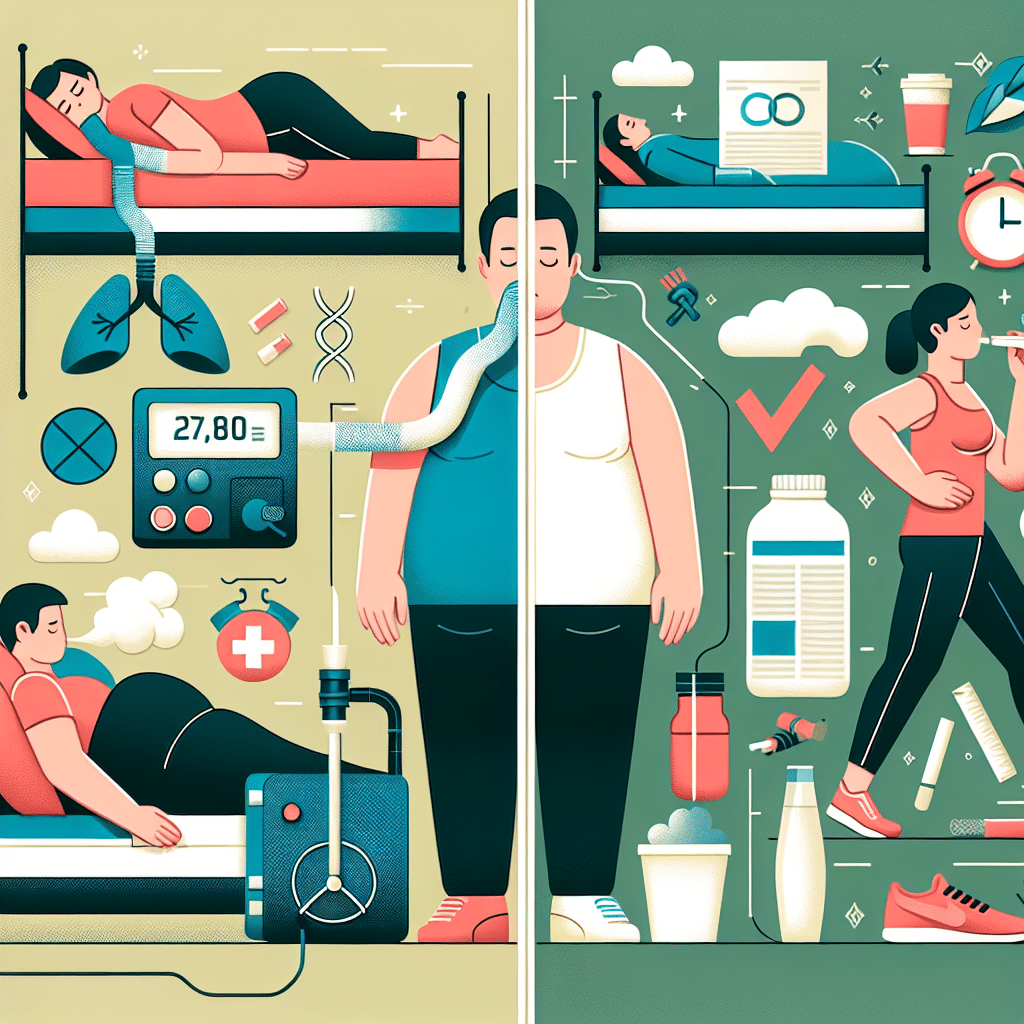Understanding Sleep Apnea: Causes and Remedies
What Is Sleep Apnea?
Sleep apnea is a common sleep disorder characterized by repeated interruptions in breathing during sleep. These pauses can last from seconds to minutes and may occur multiple times throughout the night. The most common type is obstructive sleep apnea (OSA), which occurs when the throat muscles relax excessively, blocking the airway. Complex sleep apnea syndrome, or treatment-emergent central sleep apnea, is a mix of OSA and central sleep apnea.
Causes of Sleep Apnea
-
Obesity
- One of the primary risk factors for OSA is obesity. Excess weight, particularly around the neck, can restrict airflow by exerting pressure on the airway during sleep. A study by the American Academy of Sleep Medicine indicates a clear correlation between body mass index (BMI) and OSA severity.
-
Anatomical Factors
- Structural abnormalities in the airway, such as enlarged tonsils, a thick neck, or a recessed chin, increase the likelihood of airway obstruction. Furthermore, deviated septum or nasal polyps may exacerbate breathing difficulties.
-
Age
- The prevalence of sleep apnea rises with age. As individuals grow older, muscle tone decreases, making the airway more prone to collapse during sleep. Additionally, older adults may have other comorbid conditions that contribute to sleep apnea.
-
Gender
- Men are more likely to develop sleep apnea than women, partly due to anatomical differences in upper airway structures. However, the risk for women increases post-menopause as hormone levels change.
-
Family History
- Genetics may play a role, as those with a family history of sleep apnea are more susceptible to the condition. Researchers note that inheritable traits can lead to physical features predisposed to airway blockage.
-
Alcohol and Sedatives
- Consumption of alcohol and sedative medications can relax the throat muscles, increasing the risk of airway obstruction during sleep. Limiting intake, especially before bedtime, can help mitigate symptoms.
-
Smoking
- Smokers are at a higher risk for sleep apnea due to increased inflammation and fluid retention in the upper airway. Quitting smoking can improve sleep quality and reduce apnea severity.
-
Medical Conditions
- Conditions such as hypothyroidism, hormonal disorders, and certain neurological disorders can increase the risk of sleep apnea. Individuals with heart disease or diabetes are also at an elevated risk due to their broader health issues affecting breathing.
Symptoms of Sleep Apnea
Recognizing the symptoms of sleep apnea is critical for timely diagnosis and treatment. Common symptoms include:
- Loud snoring
- Gasping or choking during sleep
- Excessive daytime sleepiness
- Difficulty concentrating
- Morning headaches
- Mood changes, including irritability
Remedies for Sleep Apnea
-
Lifestyle Changes
- Weight Management: Reducing weight can significantly alleviate the severity of sleep apnea. A balanced diet combined with regular exercise can help lower BMI.
- Sleep Positioning: Sleeping on one’s side rather than the back can help keep the airway open. Adjustable pillows or specialized sleep positions can aid in maintaining this positioning.
-
Continuous Positive Airway Pressure (CPAP)
- A CPAP machine delivers a steady stream of air through a mask worn during sleep. This air pressure helps keep the airway open, significantly reducing the frequency of apnea episodes. A doctor can provide guidance on the best CPAP device, including options for comfort and noise levels.
-
Oral Appliances
- Oral appliance therapy involves devices that position the jaw forward to keep the airway open. These custom-fit appliances can be effective for mild to moderate sleep apnea and may be preferred by individuals who find CPAP uncomfortable.
-
Surgical Options
- In cases where other treatments are ineffective, surgery may be recommended. Procedures can include uvulopalatopharyngoplasty (UPPP), which removes excess tissue from the throat, or maxillomandibular advancement (MMA), which repositions the jaw to enlarge the airway.
-
Positional Therapy
- For some individuals, sleep apnea is mainly triggered by sleeping on their back. Devices that encourage side-sleeping, such as specialized vests or wedge pillows, can help alleviate symptoms.
-
Medication
- While there are no specific medications for treating sleep apnea, certain drugs can alleviate symptoms associated with the disorder, such as daytime sleepiness. Modafinil, for example, may be prescribed to treat excessive sleepiness.
-
Therapeutic Interventions
- Cognitive behavioral therapy (CBT) can help manage insomnia symptoms commonly associated with sleep apnea. Stress reduction techniques and mindfulness practices can also enhance sleep quality.
-
Regular Sleep Schedule
- Maintaining a consistent sleep routine, with the same bedtime and wake-up time across the week, can improve overall sleep quality and minimize apneic episodes.
Monitoring and Follow-up
Regular follow-up with healthcare providers is essential for sleep apnea management. Individuals should track their sleep patterns, symptom severity, and treatment effectiveness. Adjustments to therapies may be necessary based on individual progress and any changes in health condition.
Conclusion
By understanding the various causes of sleep apnea and exploring effective remedies, individuals can take proactive steps toward reclaiming their sleep and overall well-being. It’s essential to work closely with healthcare professionals to ensure the chosen method fits personal needs and addresses the underlying causes effectively.
Additional Considerations
- Support Groups: Connecting with others experiencing sleep apnea can provide emotional support and share practical advice.
- Educational Resources: Many organizations offer resources to help individuals better understand sleep apnea, its effects, and effective management techniques.
- Sleep Studies: If obstructive sleep apnea is suspected, a sleep study (polysomnography) may be necessary for diagnosis and to assess the severity of the disorder.
Maintaining open dialogue with healthcare providers and staying informed about evolving treatment options can optimize outcomes for those affected by sleep apnea.
